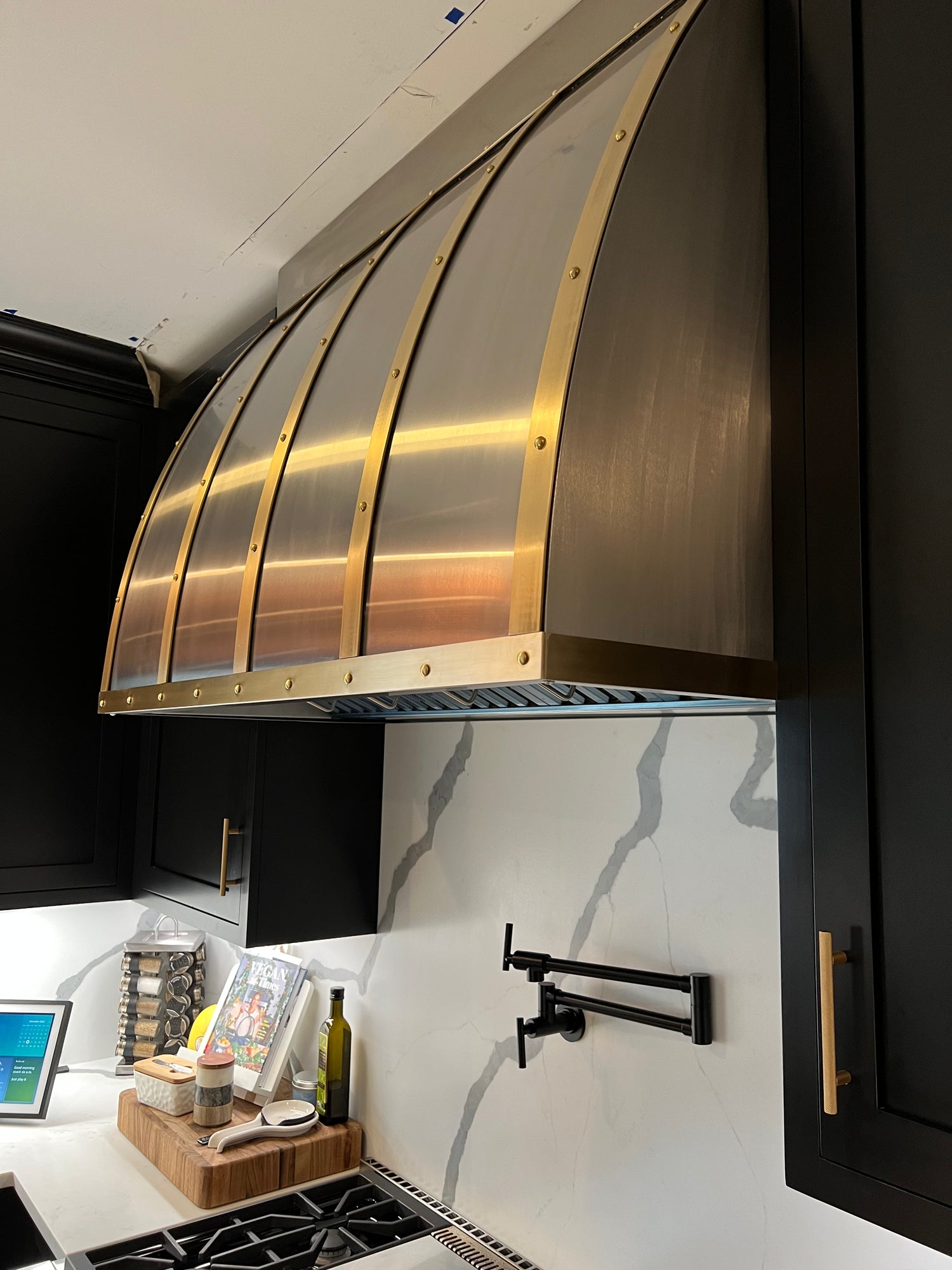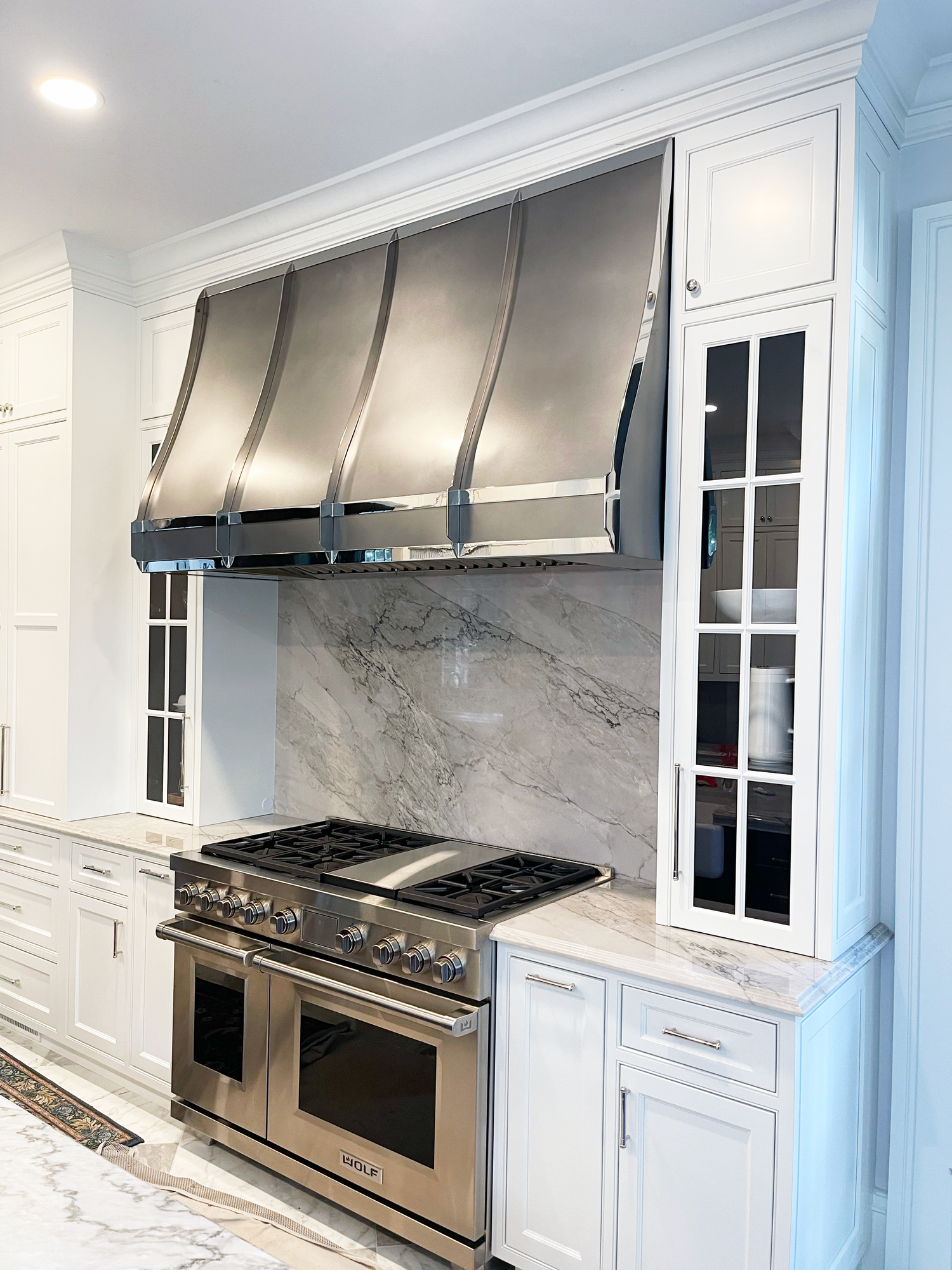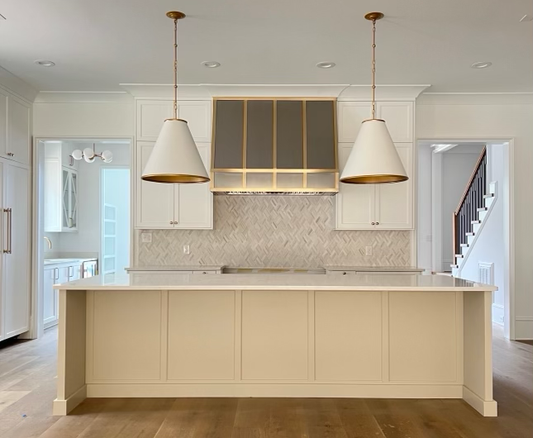You dream it. We build it.
Charlotte Lumber can build almost anything for your home. Simply show us your inspiration photos, and we take care of the rest. Design, build and delivered to your door.

Range Hood Covers
Angled Range Hoods
Our angled style range hoods have flat sides and flat fronts.

Range Hood Covers
Scooped Range Hoods
Our scooped range hoods have flat sides and a continuous curved front panel.

Range Hood Covers
Sloped Range Hoods
Our sloped style range hoods have flat sides with a soft curved front.
Contact form
-
Sloped Range Hood - with trim and strapping - Stainless
Regular price $12,750.00 USDRegular price -
Angled Range Hood - with trim - Silver / Gold
Regular price $12,750.00 USDRegular price -
Sloped Range Hood - with trim and strapping - Bronze / Gold
Regular price $12,750.00 USDRegular price -
Sloped Range Hood - with strapping and trim - Sage Green / Gold
Regular price $12,750.00 USDRegular price -
Scooped Range Hood with strapping - Metal
Regular price $12,750.00 USDRegular price -
Angled Range Hood - with strapping and trim - Grey / Gold
Regular price $12,750.00 USDRegular price
-
Custom Designs
Choose from our collection of custom designed range hoods or bring your own design. Our engineers can build anything.
-
Made in Charlotte, NC
We build our custom range hood covers in Charlotte, North Carolina USA. You can pick up locally or we can deliver nationwide.
-
Materials
We can build your range hood from a solid exotic hardwood, or we can add wood accents to a metal range hood. The choice is yours.
Range Hood Basics
A range hood, also known as an extractor hood or kitchen
hood, is a kitchen appliance designed to remove airborne contaminants, odors,
smoke, grease, and heat produced during cooking. It is typically positioned
above a stove or cooktop to improve indoor air quality and maintain a clean and
comfortable kitchen environment. Here are some key points about range hoods:
Functions:
- Ventilation: The primary function of a range hood is to ventilate the air in the kitchen. It does so by capturing and exhausting the cooking byproducts to the exterior of the building, preventing them from spreading throughout the kitchen and the rest of the home.
- Odor Removal: Range hoods help eliminate cooking odors, which can be particularly useful when preparing strong-smelling dishes.
- Grease Removal: They capture airborne grease particles generated during cooking, which can accumulate on kitchen surfaces and appliances, and pose a fire hazard.
Types of Range Hoods:
- Ducted / Vented Hoods: These range hoods are connected to a duct system that expels the air outdoors. They are highly effective at removing cooking byproducts but require proper installation.
- Ductless (Recirculating) Hoods: Ductless hoods filter the air through a series of filters to remove impurities and odors before recirculating the clean air back into the kitchen. They are easier to install but not as efficient as ducted hoods.
Design and Mounting:
- Range hoods come in various designs, including under-cabinet, wall-mounted, island, and built-in hoods, each suited to different kitchen layouts and styles.
- They can be made from various materials, including stainless steel, glass, and various finishes to match the kitchen decor.
Fan Speeds and Controls:
- Most range hoods have adjustable fan speeds and lighting options. Higher fan speeds are used for heavier cooking, while lower settings suffice for light cooking.
- Many modern range hoods have electronic controls with touchscreens or remote
controls for ease of use.
Size and CFM Rating:
- Choosing the right size and CFM (cubic feet per minute) rating for a range hood is essential. The hood should be large enough to cover the entire cooking surface and have sufficient CFM to handle the heat and cooking byproducts effectively.
Maintenance:
- Regular cleaning and maintenance of range hoods are important to ensure their
efficiency and longevity. Filters, especially in ductless hoods, should be cleaned or replaced as needed. - Ducted hoods require periodic inspection and cleaning of the ductwork to prevent
the buildup of grease and debris.
Noise:
- Range hoods can be noisy, especially on higher fan settings. Quieter models are
available, but they may be more expensive.
Safety:
- Proper installation and maintenance are critical to ensure safety. Ducted hoods must be installed according to local building codes to prevent fire hazards.
- Range hoods play a vital role in maintaining a clean and
safe kitchen environment, enhancing the cooking experience, and improving
indoor air quality. The choice of a range hood should be based on the kitchen's layout, the cooking habits of the household, and the need for effective
ventilation and odor control.
Materials we use
Metals
- Brass
- Copper
- Stainless Steel
Wood
Wood (light tones)
- Birch
- French Oak
- Hickory
- Garapa
- Maple
- Pine
- Poplar
- White Oak
Wood (medium tones)
- Angelim Pedra
- Brazilian Apitong
- Cherry
- Chestnut
- Cypress
- Cumaru
- Douglas Fir
- Elm
- Knotty Alder
- Red Oak
- Rustic Pine
Wood (dark tones)
- Brazilian Redwood
- IPE
- Golden Mahogany
- Jatoba
- Mahogany
- Reclaimed Oak
- Teak
- Tigerwood
- Pecky Bolivian Walnut
- Walnut






